Beneath the Bodhi Tree in Bodh Gaya and other things to do when you visit Bodh Gaya
We arrived by train in the town of Gaya, a major transport hub and the nearest significant town to Bodh Gaya. From there, we took an auto-rickshaw to the small settlement which has grown to service the pilgrims and travellers who visit the temple. After the mass of humanity at the Kumbh Mela, an air of serenity enveloped the sleepy town of Bodh Gaya. Revered as the place where Buddha attained enlightenment, this is Mecca for Buddhists. There are four important pilgrimage sites that Buddhists visiting Bodh Gaya should travel to; three of them are in northern India and one, Lumbini, is now in Nepal. We’ve been to three so far, with Kushinagar still to go!
- Lumbini – the birthplace of Buddha
- Sarnath near Varanasi – the site of Buddha’s first sermon
- Bodh Gaya – the place of his enlightenment
- Kushinagar – the site of the Buddha’s death/rebirth/nirvana
We headed off to the Mahabodhi Temple complex, a short walk from our guest house. Believed to have been built around 250 BC, the temple marks the spot of the Bodhi tree where the Buddha sat, contemplated and, in time, reached the state of nirvana. Thus, it is an extremely sacred place for Buddhists. The area surrounding the temple bustled with people coming and going. As you would expect, there were lots of monks from countries all over Asia. As well as their physical characteristics you can often also tell where a monk is from by the colour of his robes – monks who follow the Tibetan schools of Buddhism usually wear the dark maroon robes whereas monks from Sri Lanka and South-East Asia (Thailand, Laos and Cambodia) who follow Theravada Buddhism tend to wear saffron orange or ochre robes. Although interestingly, Burmese monks who also are predominantly Theravada mostly dress in maroon. There were also Buddhist nuns who tend to dress in white or pale pink. Monks and nuns from Korea, Japan and China usually wear grey or black.
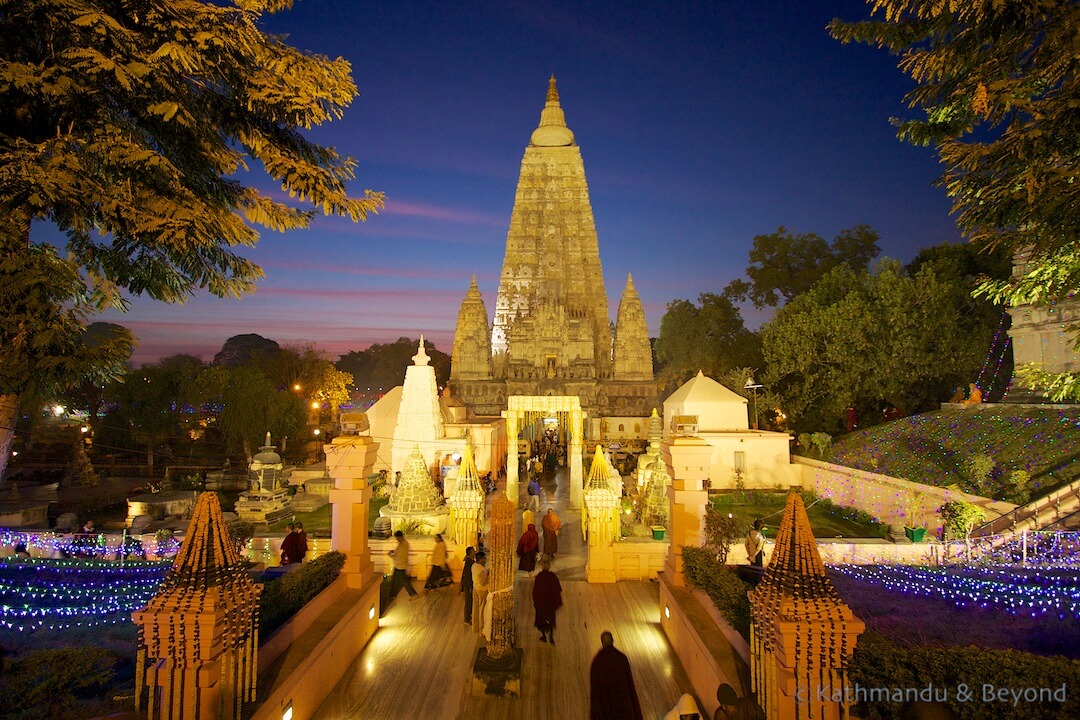 Mahabodhi Temple, Bodh Gaya
Mahabodhi Temple, Bodh Gaya
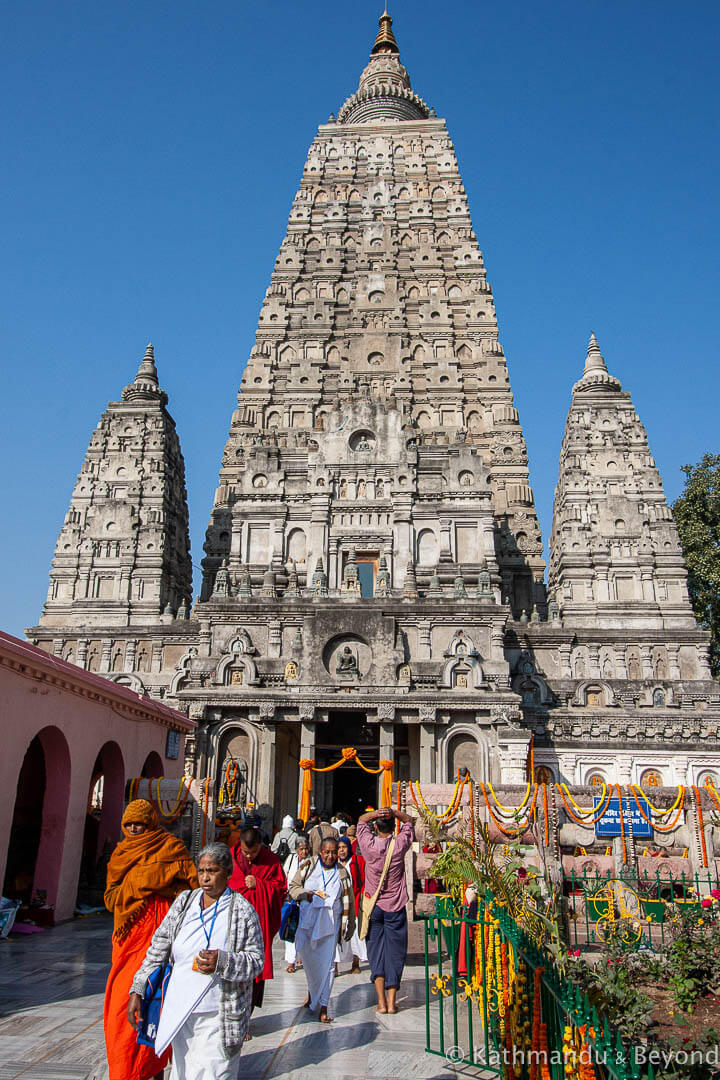
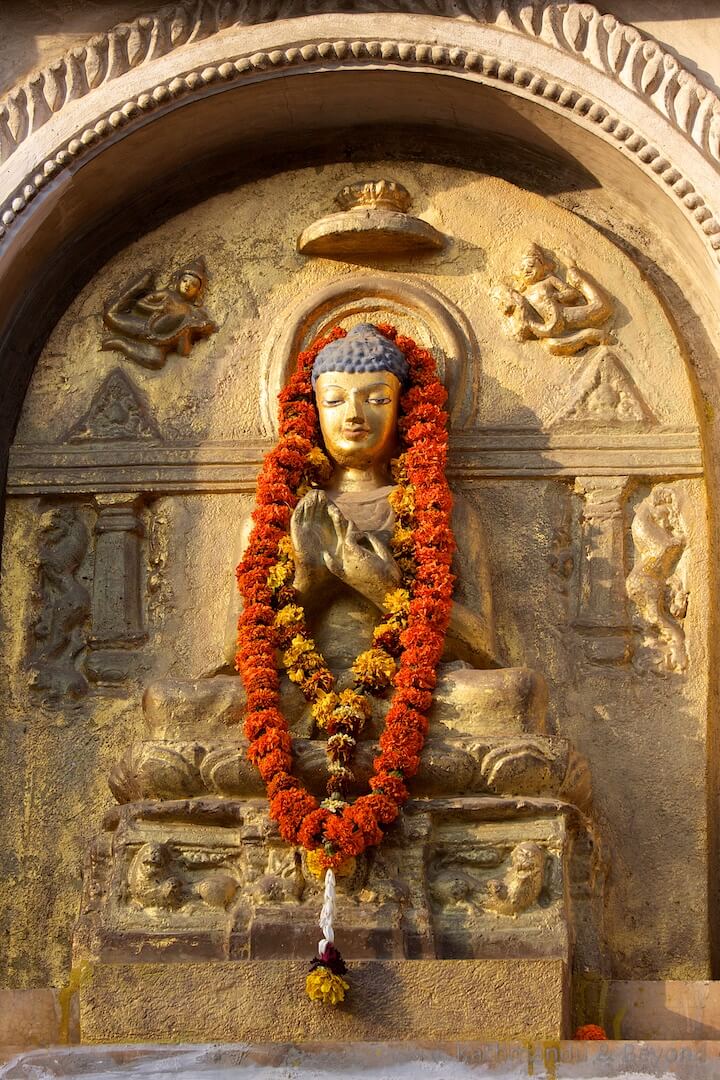
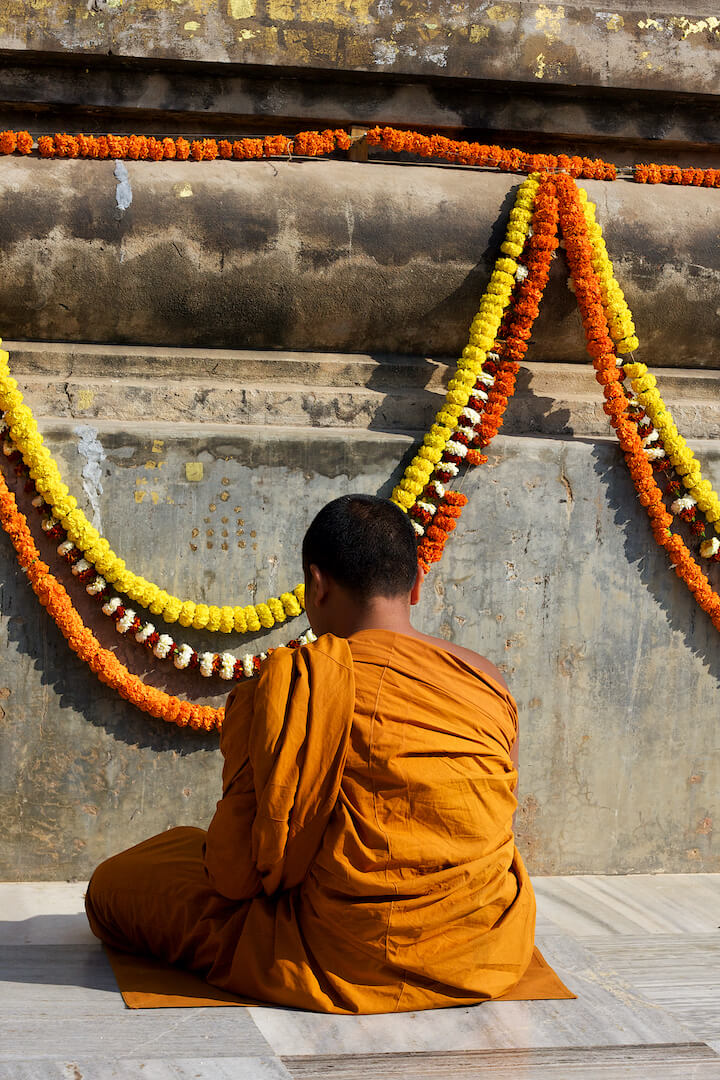
Mahabodhi Temple, Bodh Gaya
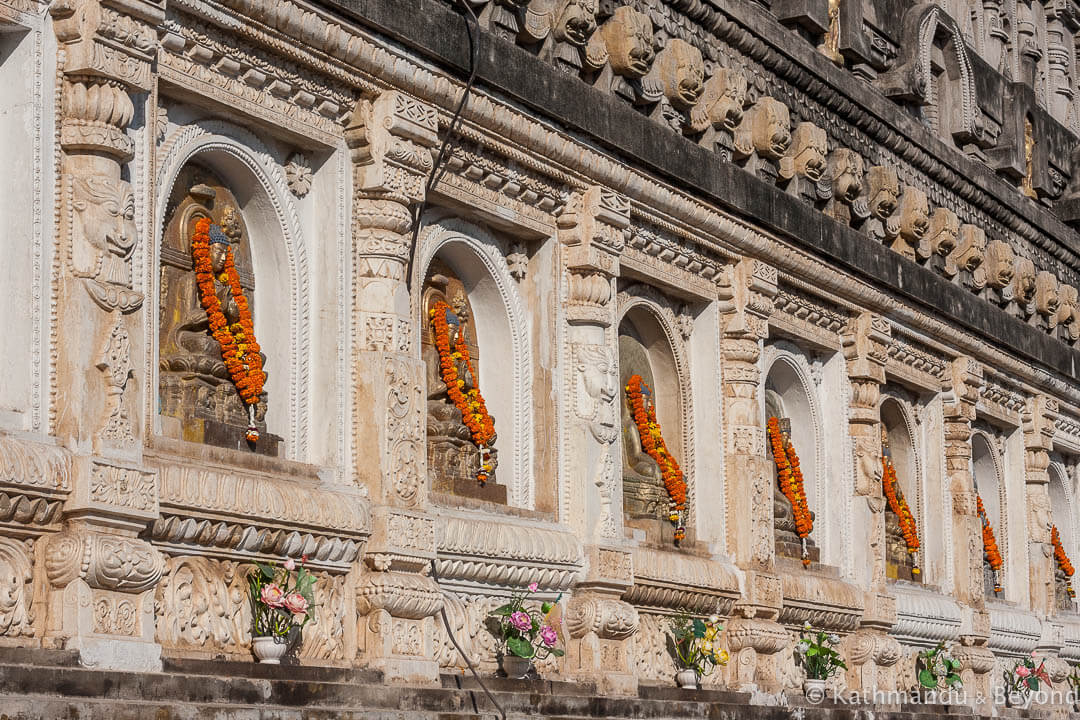 Mahabodhi Temple, Bodh Gaya
Mahabodhi Temple, Bodh Gaya
As well as monks and nuns there were many other followers of Buddhism from all over the Buddhist world. There were also Hindus and Muslims and, I assume, although not so easily recognisable, Christians and Jews. And yet the atmosphere was one of respect and peace.
Around the temple, monks were praying and prostrating on wooden platforms – repeating over and over the fluid movement of standing, kneeling and stretching their bodies flat, on the same spot. The area directly in front of the temple and underneath the sacred Bodhi tree was full of seated monks chanting and playing traditional instruments – gongs and drums. If I’m honest the music that accompanies the deep throaty rumble of chanting monks isn’t the most tuneful but there is something rather calming about it.
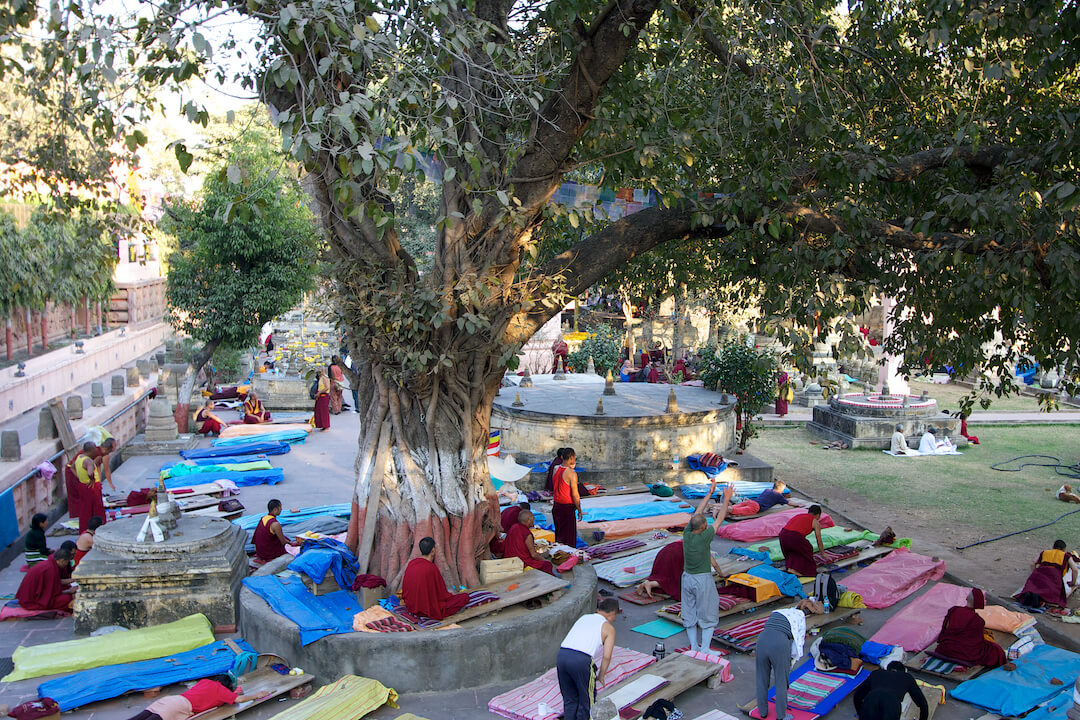 Pilgrims in gardens of the Mahabodhi Temple, Bodh Gaya
Pilgrims in gardens of the Mahabodhi Temple, Bodh Gaya
We quickly learnt that the reason it was so busy was that it was Losar – Tibetan and Bhutanese New Year. That explained why there were so many people visiting Bodh Gaya from both of those countries. Their traditional dress added further to the colour, and the atmosphere was captivating. We spent the next few days sitting, observing, walking and chatting to the many other visitors at the temple.
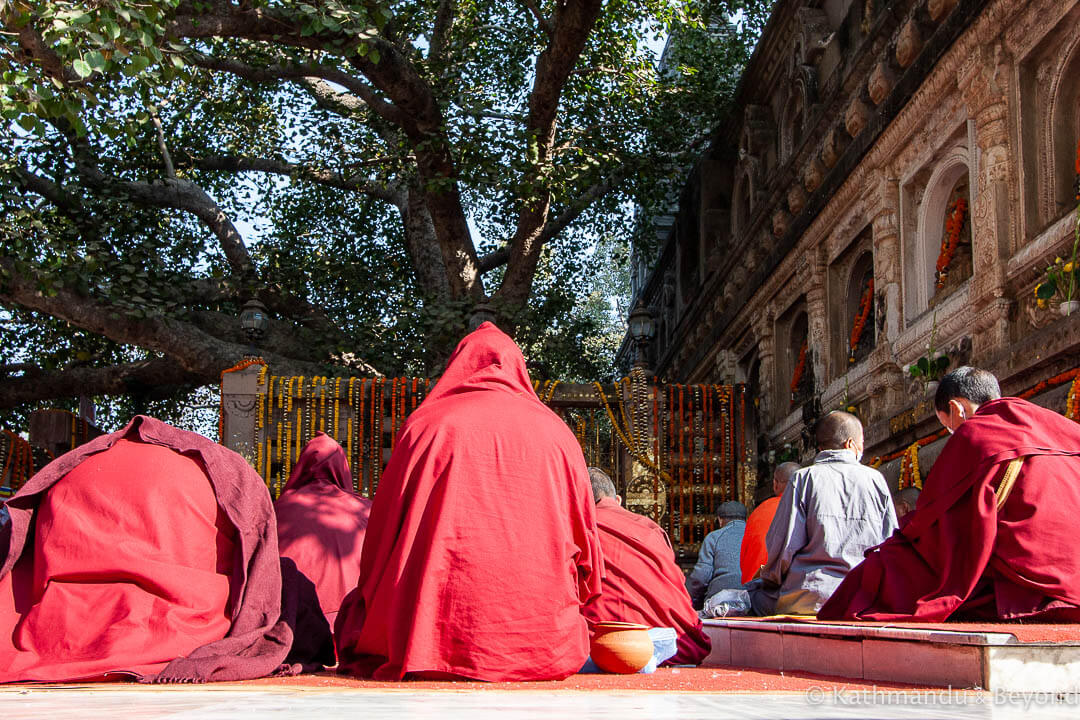 Pilgrims at the Mahabodhi Temple, Bodh Gaya
Pilgrims at the Mahabodhi Temple, Bodh Gaya
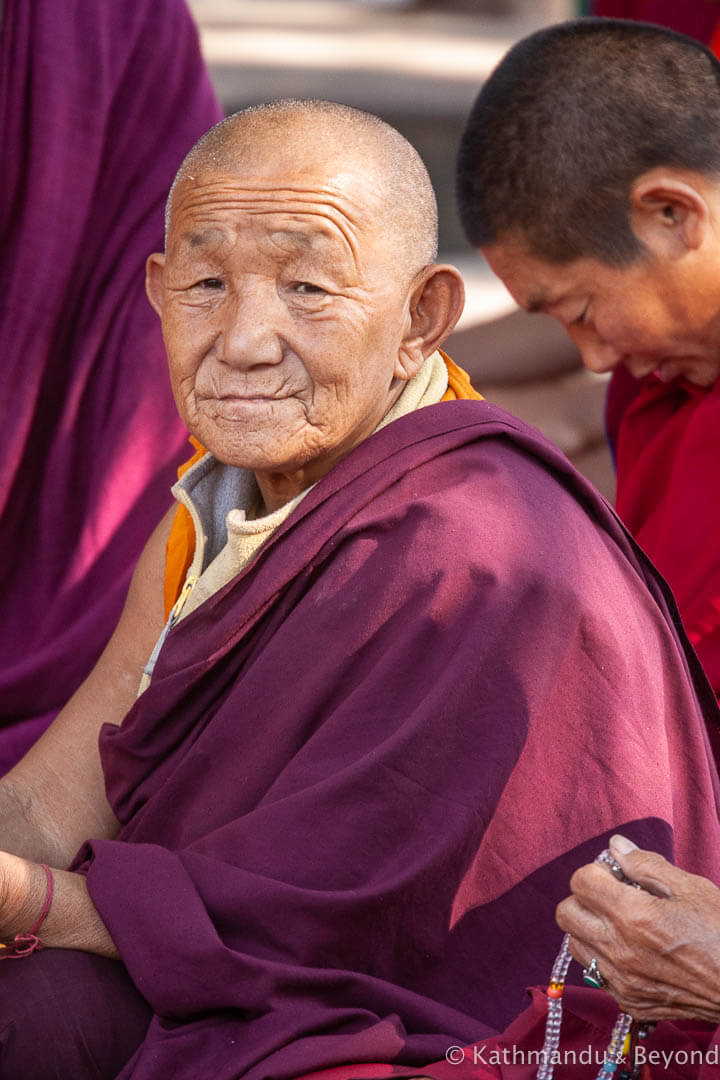
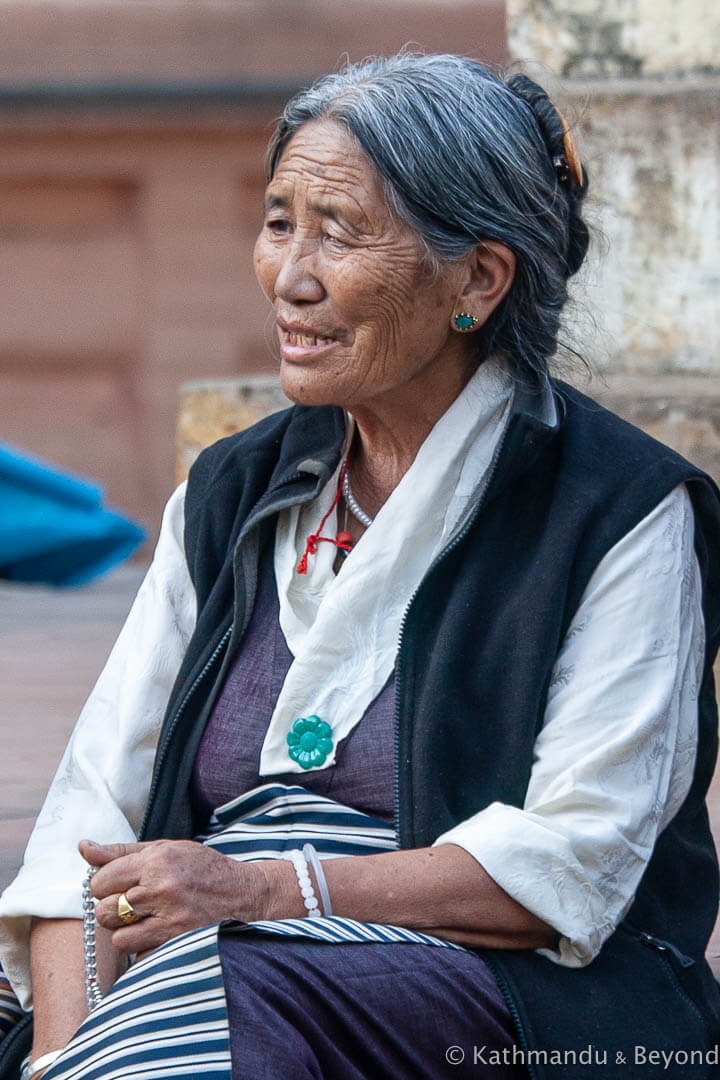
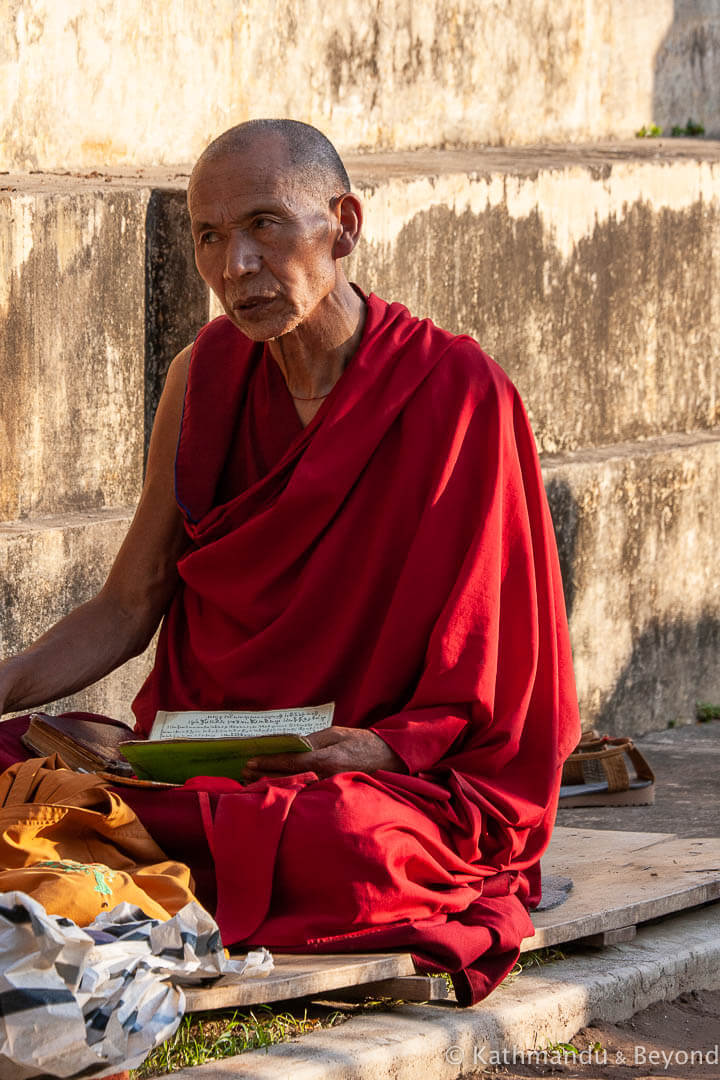
Pilgrims at Bodh Gaya
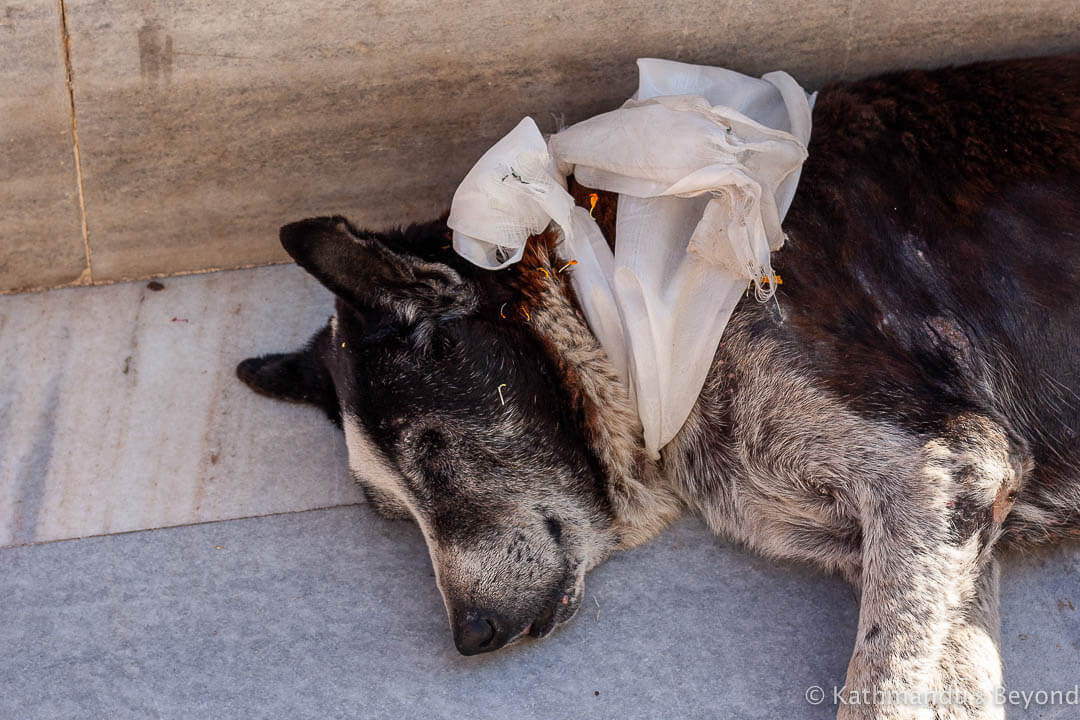 Canine pilgrim at Bodh Gaya
Canine pilgrim at Bodh Gaya
One of the most treasured souvenirs from a visit to Bodh Gaya is a leaf from the sacred tree itself. However as didn’t seem appropriate to throw a large object into its branches to encourage a few leaves to shake loose, the only way to get one was via divine intervention. It was quite amusing to watch as people sat quietly, apparently lost in prayer or contemplation, but when a leaf began to drift slowly down from the tree suddenly they became highly alert and a hand would dart out to grab the leaf before anyone else stood a chance. I was quite keen to get a prized leaf myself but it seemed a little unbecoming to scramble for one in an attempt to win one from someone who was undoubtedly more Buddhist than I. So, I just sat and watched. As one leaf fell, it landed at the feet of a monk who reached and picked it up. I was surprised when he turned and handed me the precious leaf, apparently so difficult to come by. When I asked him why he didn’t want to keep it for himself he replied, “I live here. When I come here to the temple at 4am there are many, many leaves to choose from.” Not quite so rare after all but it would seem that it is the early Buddhist who catches the leaf! And I got mine.
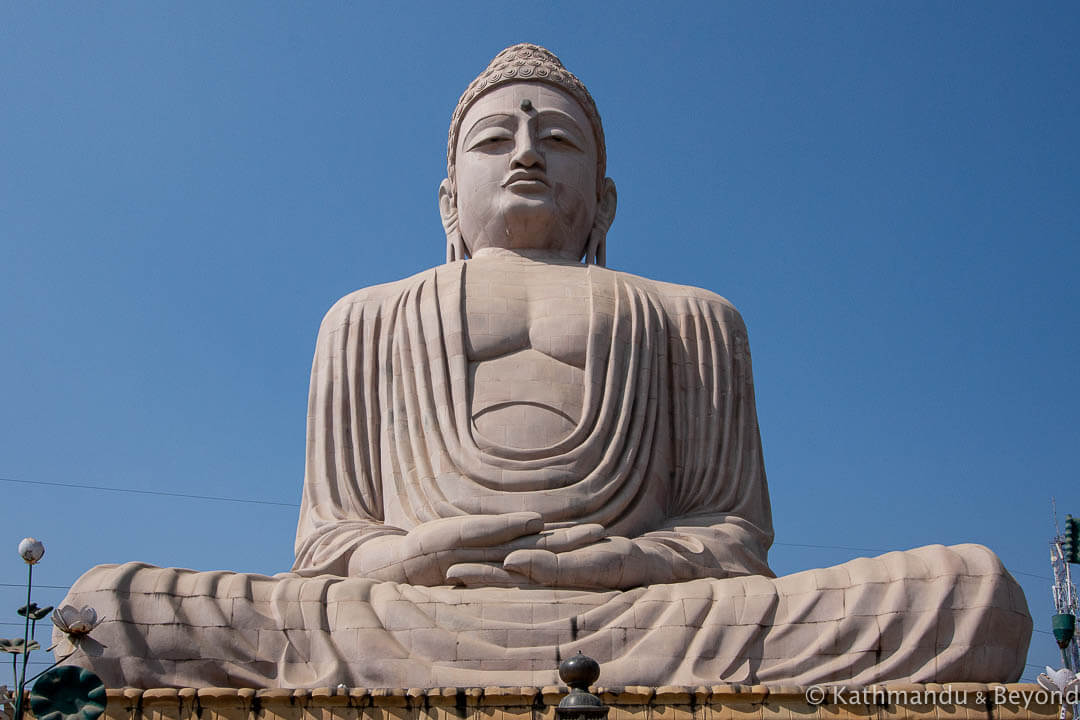 Great Buddha Statue, Bodhgaya
Great Buddha Statue, Bodhgaya

Trackbacks/Pingbacks